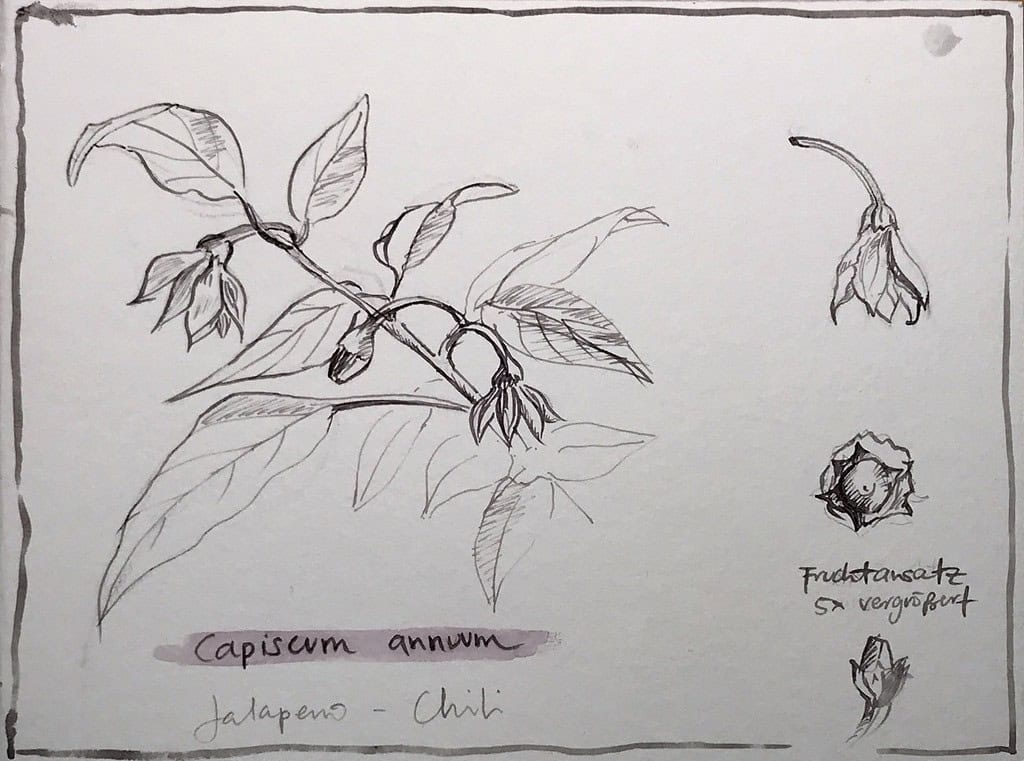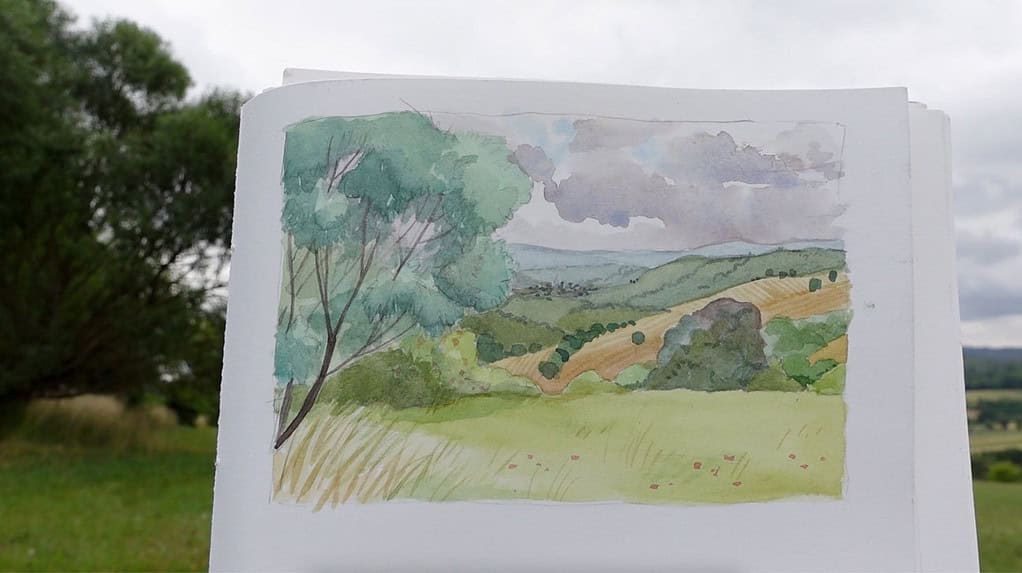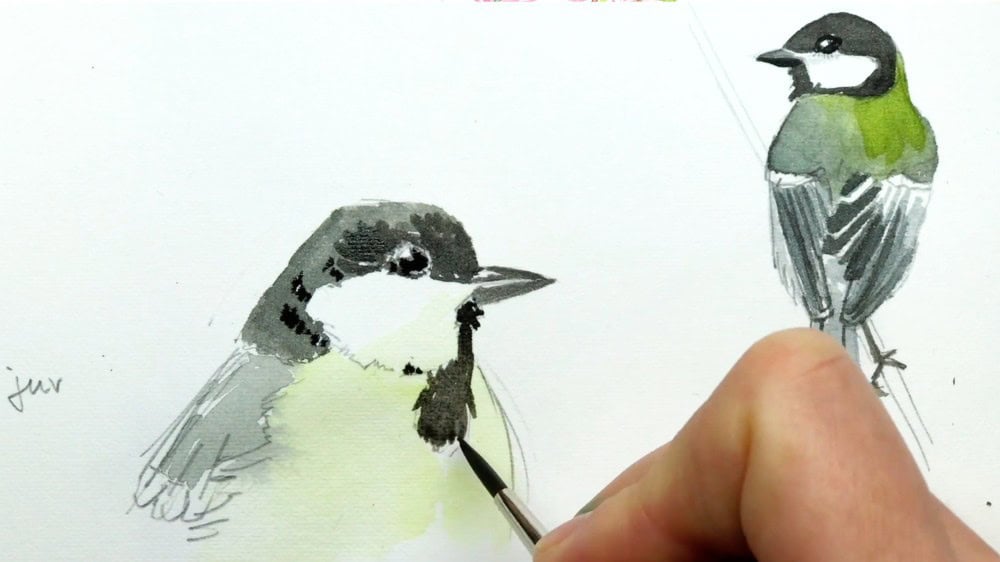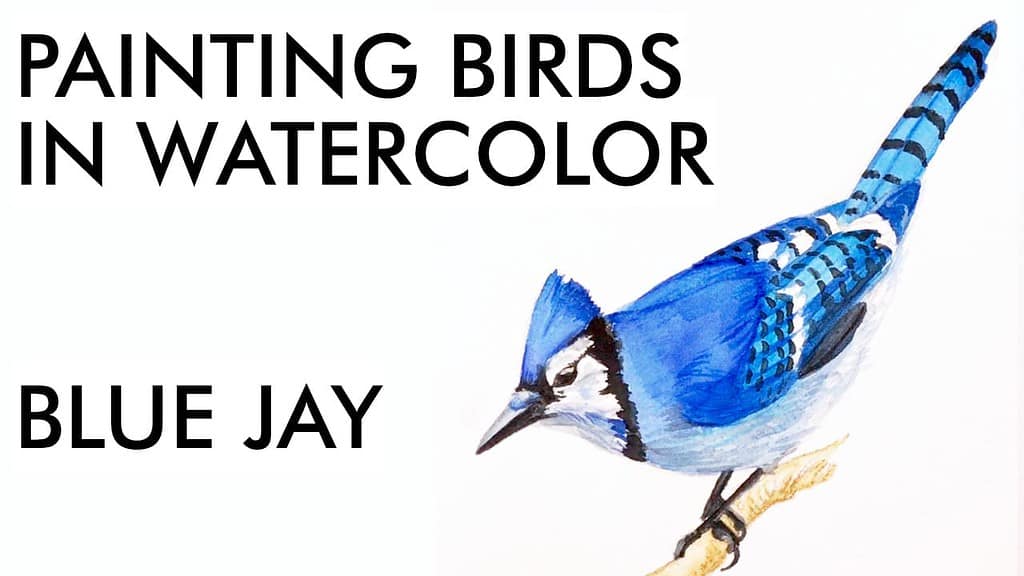After sharing a recipe for making walnut ink last time, I have a recipe for pomegranate ink. This ink will be a lovely light grey that darkens quite a bit when it dries.
I tried this out a few years ago when I had done some research on how to make iron gall ink. Turns out you’ll need oak galls, which I couldn’t find in nature around here. Oak galls are formed by certain kinds of gall wasps that lay their eggs into oak leaves. The developing larvae release chemicals that cause the leave to form a large, round gall that protects the larva while it’s developing.
I’m not a big fan of ordering stuff you can find for free, so I read on and found out you can also use pomegranate peels for making your own kind of iron gall ink. Anything that has a lot of tannic acid should work, although the ink might turn out a bit differently in color depending on the plant. Since you can eat the pomegranate seeds (they’re in season now and so yummy!), I consider the peels free experimentation material.
All you need to make this yourself is a few pomegranates, a handful of slightly rusty iron nails, vinegar, a pot, some jars, and time! I ended up with a lot of ink – more than I could have possibly used for my art, so it’s best to start with small amounts. Remember how long a small jar of ink usually lasts.
- Put the rusty nails into a small jar with water and a good amount of vinegar. Since this was a spontaneous experiment, I didn’t write down the quantities – sorry! Just make sure the nails are covered with liquid. If your iron nails aren’t rusty yet, they will get to that soon in that mix. Let everything sit for a few days until the water/vinegar looks rusty and has a brown color.
- This step is the best: peel the pomegranates and eat the seeds.
- Dry the peels if you don’t plan to use them immediately to prevent mold. I’ve read you could also ferment them to increase the amount of tannic acid. For that, you need to moisten the peels, rub them together to break up the cells, and then dry them slowly – they will turn darker in the process.
- Crumble the peels to smaller pieces, put them in a pot with 0,5l water and cook them for half an hour to an hour. The mixture will have a light brown-reddish color. Let it cool for a bit.
- Take the peels out of the liquid. Strain the mixture through a fine sieve (I used paper tea filters) so that all the solid parts will be gone.
- Heat again and cook for another 15-20 minutes until the liquid begins to get thicker – like cream or very thin maple sirup. Put the liquid into a jar and let it cool. I haven’t tried out how long this stays fresh, but without the next step, it won’t be a stable mix.
- To assemble your ink, take a small container and fill it with the light pomegranate sirup. Slowly add some rusty nail water (strain this through a tea filter too to avoid particles in your ink). You will see it turns dark on contact. This is the iron sulfate (produced from the rusty iron & vinegar) reacting with the tannic acid in the pomegranate peel sirup.
- Tip: You can adjust the color by adding less or more rusty water. You also may have to add a little bit of gum arabic to make the ink flow better. When I tried this, it was all very spontaneous and experimental, so I’m sorry I can’t give you a more precise recipe.
And now your ink is ready to draw or write! Be warned that ink with tannic acid (like iron gall ink or this self-made pomegranate ink) will corrode your nibs after a while, and it will also eat through paper, which is why you shouldn’t write any important documents with it. Original documents from the last few centuries are a nightmare for archivists: people didn’t have any other ink back then, and nowadays the documents crumble under our hands.
I experienced this effect first-hand: I stored my pomegranate ink in a container with a metal lid, and after a few years the ink hat eaten through the metal.
For practice, this ink is great though, because you can make very fine hairlines with it and it has a lovely dark-grey color.
You can learn more about making iron gall ink, corrosion, and historic recipes on this site: The Iron Gall Ink Website
A lot of you wrote in after the last post and shared their own experiences with self-made ink, and I did a bit of additional research, too – apparently you can also make ink from certain mushrooms and from berries, too. If you have a recipe you want to share, put it in the comments, I’m always curious!

Thank you for reading this blog! It'll always stay free. To keep it going, you can support my work directly through a donation or through my nature sketching classes.

Join my free newsletter and never miss a blog post! You'll get new blog post notifications directly to your inbox. Receive 5 great sketching resources as a welcome gift for joining my newsletter! Here's what's inside:
- How to draw anything (PDF guide)
- Getting started with watercolor (free ebook)
- My favorite tips for creating great sketchbook pages
- My 5-step guide for drawing birds (PDF guide)
- My current watercolor palette layout (PDF guide)
By subscribing, you agree that I may process your information in accordance with my privacy policy





I’m very happy to have found you and your blog. I love making my own anything and am so pleased to see the myo inks! I’ll have to be patient and wait but I wrong forget. Thank you!
Katie
I’m happy to hear that and great you are here, Katie!